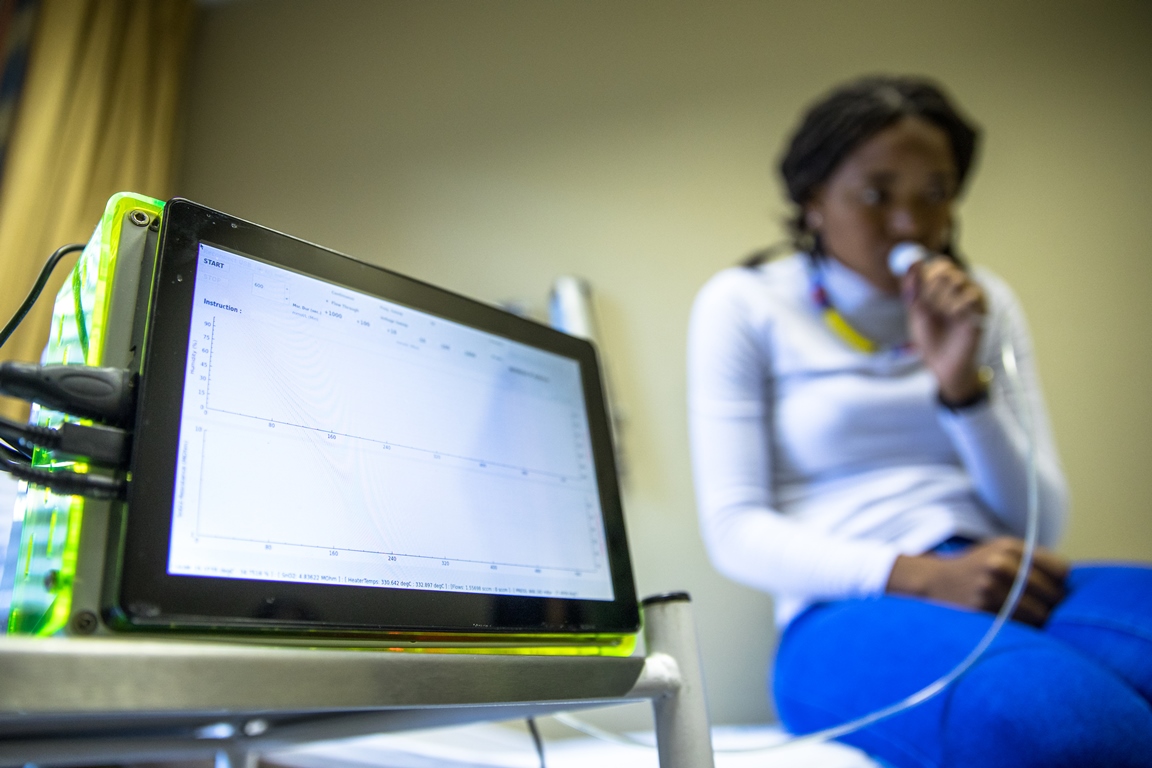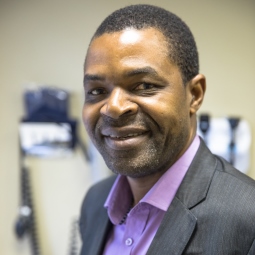Diabetes-detecting chip brings inventor popular acclaim
Featuring on radio, in newspapers and even making it to the top three of a competitive television show, the inventor of a diabetes breath analyser certainly has had a bumper year. The CSIR’s Dr Bonex Mwakikunga developed the Breath-Tech diabetes breath analyser after seeing the pain that his young, diabetic daughter had to endure every time she had to have her finger pricked to test her blood sugar levels.
Featuring on radio, in newspapers and even making it to the top three of a competitive television show, the inventor of a diabetes breath analyser certainly has had a bumper year. The CSIR’s Dr Bonex Mwakikunga developed the Breath-Tech diabetes breath analyser after seeing the pain that his young, diabetic daughter had to endure every time she had to have her finger pricked to test her blood sugar levels.
Mwakikunga, who leads the CSIR’s nanomicro device manufacturing facility, wanted to devise a painless, sanitary way to test for high blood sugar (a symptom of diabetes) through breath.
The new device detects acetone, a by-product in the breath of a person with very high blood sugar levels. In other words, the device detects a biomarker of diabetes, much the same way that the common alcohol breathalyser determines blood alcohol levels in breath.
The innovation within the diabetic breath analyser is a micro-nanochip, cleverly constructed to detect substances with fine-tuned precision.
Mwakikunga says the small device can be tuned to detect different substances, like a radio can be tuned to pick-up, or detect different stations. The micro-nanochip can also amplify the substance it detects, just like turning up the volume on the radio amplifies the sound it emits.
The innovations that have made the device revolutionary came after a fair amount of searching for answers locally and abroad.
“In 2013, we were having trouble with two electrode sensors in the chip,” says Mwakikunga. “We went to Italy to find out how they make the sensors and we came back with an unsatisfactory answer to the problem.”
The chip has many applications to detect any stimulus in the environment. Mwakikunga says it can be used to detect light, pressure and sound, and it can also sense gases with high accuracy, like in the new diabetes breath analyser.
The chip can also detect formaldehyde, a biomarker of lung cancer that other sensors might not be able to distinguish from acetone.
Mwakikunga’s invention made news on Radio 702 in December 2017. “My wife and I had to visit the hospital several times because of the swelling and the pain from pricking,” he said during the radio interview with Stephen Grootes.
“I had to think about a better way to detect diabetes without pricking and we finally came up with this device.”
In December 2017, Mwakikunga’s invention took him to the top three finals of the Cell C Hangman TV show that brought together some of South Africa’s brightest minds and their inventions.
Beyond the breath analyser, the chip can be used in the mining industry and it can detect environmental pollution. “The chip is being harnessed as a gas analyser to sniff environmental pollutants, such as nitrogen oxides, ammonia, methane and sulphur compounds,” says Mwakikunga.
Patents on the nanosensor, which also has other applications in mining, environmental and health sectors, have been accepted in South Africa (2016), the United States of America (June 2017) and the People's Republic of China (October 2017); and are pending in Finland, Germany, India and Korea . Revisions were re-submitted to Japan in May 2018 and the Republic of China in June 2018.

gives her breath sample to be analysed during a typical pre-clinical trial session in 2017.


